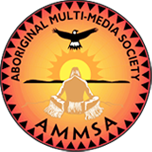Article Origin
Volume
Issue
Year
Page 2
Issues of child development and foster care got particular attention at the Alberta Treaty Women's Gathering Feb. 12 to 14.
On the first day, participants were divided into groups that held breakaway sessions on suicide prevention, drug and alcohol, mental health, cultural awareness, fetal alcohol syndrome and effects, child care and development, and foster care.
Foster care recommendations highlighted the importance of home visits from Elders, cultural awareness, foster parents' training, organizing of a provincial advisory board specific to Aboriginal children, parental rights of appeal, and development of First Nations' own policies with easy to understand terms.
Final drafts of recommendations will be available after they are approved by the chiefs in the second part of March, the Treaty 6 Advisory Council told Sweetgrass.
"I would like these recommendations that were brought here by you, women, to be shared with the leadership . . . so something can be done because we're now speaking in one voice," said Helen Gladue, vice chair for the Treaty 6 Advisory Council.
Ethel Blondin-Andrew, Secretary of State for Children and Youth since 1997, suggested Native people should become more involved in mainstream government in order to be better placed to resolve issues of concern to them.
The gathering was also presented with reports on Aboriginal child care as well as child welfare programs from government representatives.
Maggie Walsh, a policy officer at Strategic Partnerships Canada, said the purpose of the Aboriginal Human Resources Development Agreement (AHRDA) is to provide Aboriginal organizations with the ability to design their own programs.
The First Nations and Inuit Child Care (FNICC) component of the AHRDA strategy aims to have a First Nations- and Inuit-driven program to deliver high-quality daycare across Canada, which would meet child development needs, "as well as to respect community objectives and values," Walsh said.
The program would be flexible with some general guidelines, and would be determined at the community level, she explained.
The program was created in 1996.
"There's $41 million available annually for the program, and the funding is protected within the strategy. That means that funding from other areas such as labor market can be taken and put into childcare to supplement it, but none of the money for childcare could be taken out. So it's insured that there is that base minimum to support the childcares."
About 450 communities (with 14,000 day care spaces) are funded through the FNICC.
Walsh said most of the 42 First Nation communities in Alberta receive some funding through FNICC with about 2,000 spaces supported.
Foster care issues are still stirring up emotions of foster parents since summer 2001 when Alberta Child Welfare Act review started.
Rose Reilly was not at the recent women's gathering, but has attended many meetings on the Child Welfare Act review and related issues. Often, child welfare workers just don't have time to find appropriate choices, Reilly said.
"The system needs to have more choices available to make better decisions for kids."
The Alberta government has set up a Child Welfare Act Review Web site, where the review process is outlined along with the Act. Phase three, which includes consolidation and analysis of submissions and drafting of recommendations, will continue until the end of April. However, there is still room for submissions, Sweetgrass was told by the review office. For more information, go to www.childwelfareact.gov.ab.ca.
- 1341 views
